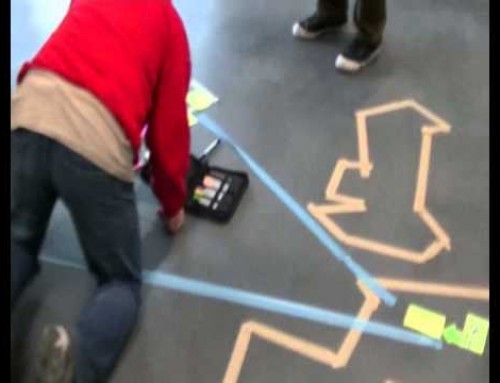Business Model Canvas — How to Use It
Business Model Canvas
In the startup and entrepreneurial community, Business Model Canvas became very popular with great acceptance in the last five years. The idea behind is to create a customer-centric and value-based picture of a company which describes customer segments, relationships, distribution channels and revenue/cost structure easier and more intuitively than a traditional business plan which is out of date even when published.
Business models describe the rationale of how an organisation creates, delivers, and captures value, in economic, social, cultural or other contexts.
The Business Model Canvas goes one step further, indeed. The Business Model Canvas is a strategic management and entrepreneurial tool to reflect systematically on your business model. It allows you to describe, design, challenge, invent and pivot your business model. It was initially proposed 2008 by Alexander Osterwalder based on his PhD thesis. Since then, new canvases for specific niches have appeared, such as the Lean Canvas.
The Business Model Canvas allows you to view, reflect, and analyse your enterprise from the following 9 distinctive perspectives. It is a simple visual method and tool for entrepreneurs, visionaries, game changers to create and test your existing and future business models.
Download free Business Model Canvas A0-Poster
The Canvas — Building Blocks of Your Business
The idea of Business Model Canvas is to questioning yourself in respect your business with regard to the following topics and to post the answers into the correlating block of the canvas.
How To Use Business Model Canvas
In general, there is no prescription in which order you have to have to fill the canvas' segments.
However, keeping in mind the most two magic concepts of and New Economy and Lean Startup Thinking — "Customer Centricity" and "Creating Value" — you should start with "Customers" and "Value Proposition".
So, I recommend you to create your canvas model best from right-to-left:
- Customer Segments
- Value Propositions
- Channels
- Customer Relationships
- Revenue Streams
- Key Resources
- Key Activities
- Key Partnerships
- Cost Structure
You will realise three main, distinct, blocks within these order:
- Right Side — Customers: "WHOM should i offer WHAT to WHICH conditions and HOW?"
- Left Side — Infrastructure: "WHAT should i modify in my product offerings, HOW and to WITH price?"
- Middle — Offering: "WHAT do i offer WHOM"?
Rules To Use Business Model Canvas
- Template:
- the canvas is a template to be used; print it on A0, A2, or A3 format ( Download free Business Model Canvas A0-Poster) or use one of the available online formats.
- Don't write on the canvas direct:
- use post-its instead — you can work more intuitively: One idea, one post-it.
- Use different coloured post-it:
- you can visualise different development stages or prioritisations. Besides of status-quo you can depict history and trade-offs of your company.
- KISS 1:
- keep your canvas model as simple as possible: restrain yourself to short descriptions.
- KISS 2:
- Trying to design several models on the same canvas easily gets confusing:
- For each new business model use a separate canvas.
- Use different canvases for different customer segments if appropriate.
- Vizthinking:
- the canvas is a tool for visual thinking. Use product images and symbols instead of words.
- Scaling;
- the method scales easily: create groups of max 10 participants for large group facilitation.
- Working Left-to-right:
- when creating the canvas, start with your customer segments or value proposition, because with the proper tuned mindset it is easier to proceed to left parts.
- Online Formats
- use the online formats when working with distributed teams.
Further Readings
- Download free Business Model Canvas A0-Poster
- Business Model Canvas Website: http://www.businessmodelgeneration.com/
- Alexander Osterwalder, Yves Pigneur: Business Model Generation: A Handbook for Visionaries, Game Changers, and Challengers, John Wiley & Sons, 2010.
- Alexander Osterwalder, Yves Pigneur, Gregory Bernarda: Value Proposition Design: How to Create Products and Services Customers Want. (Strategyzer), John Wiley & Sons, 2014.
- Canvanizer: https://canvanizer.com/new/business-model-canvas
- Business Model Fiddle: https://bmfiddle.com/f/#/
- Blank Canvas.io: https://www.blankcanvas.io/canvases/business-model-canvas







Leave A Comment